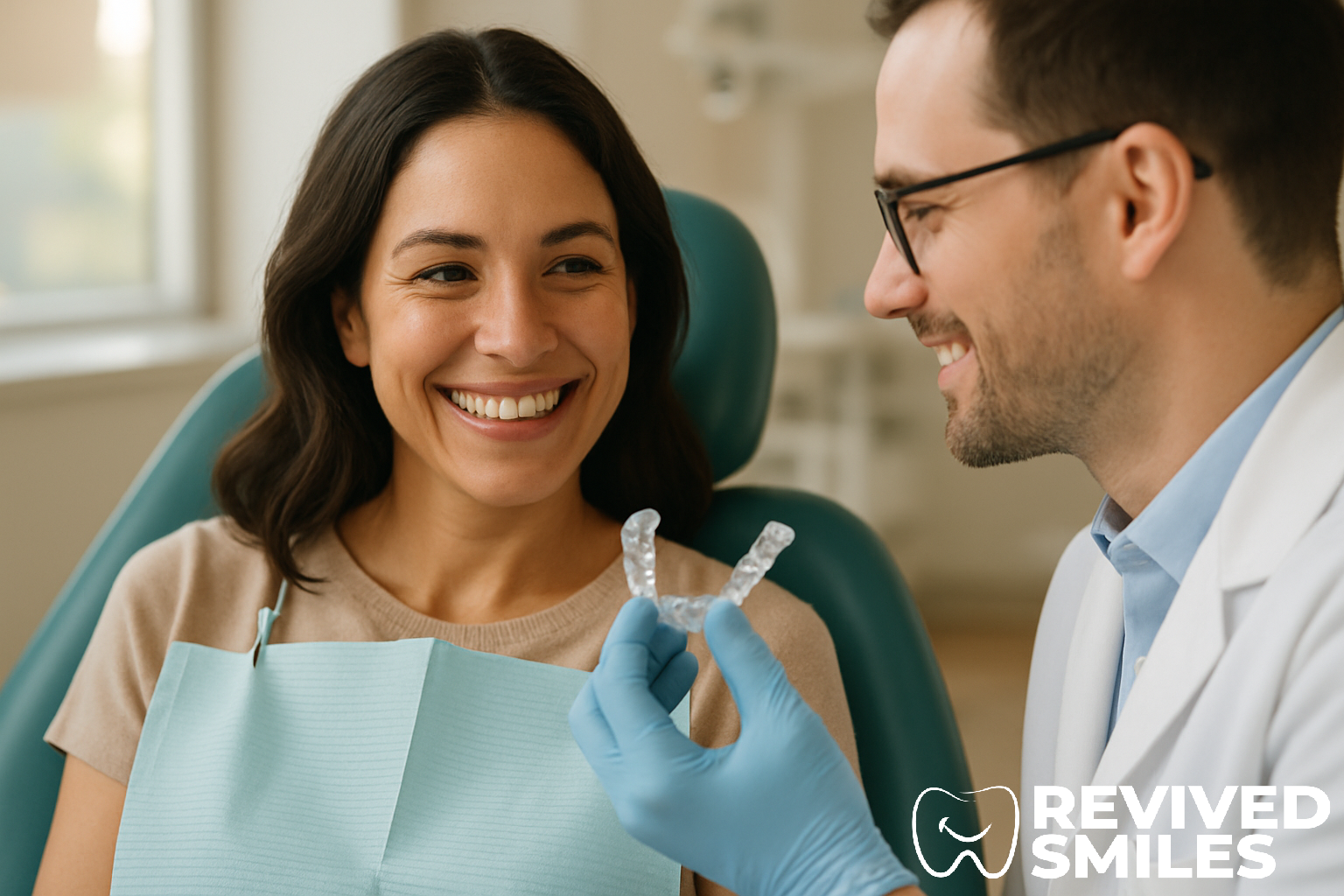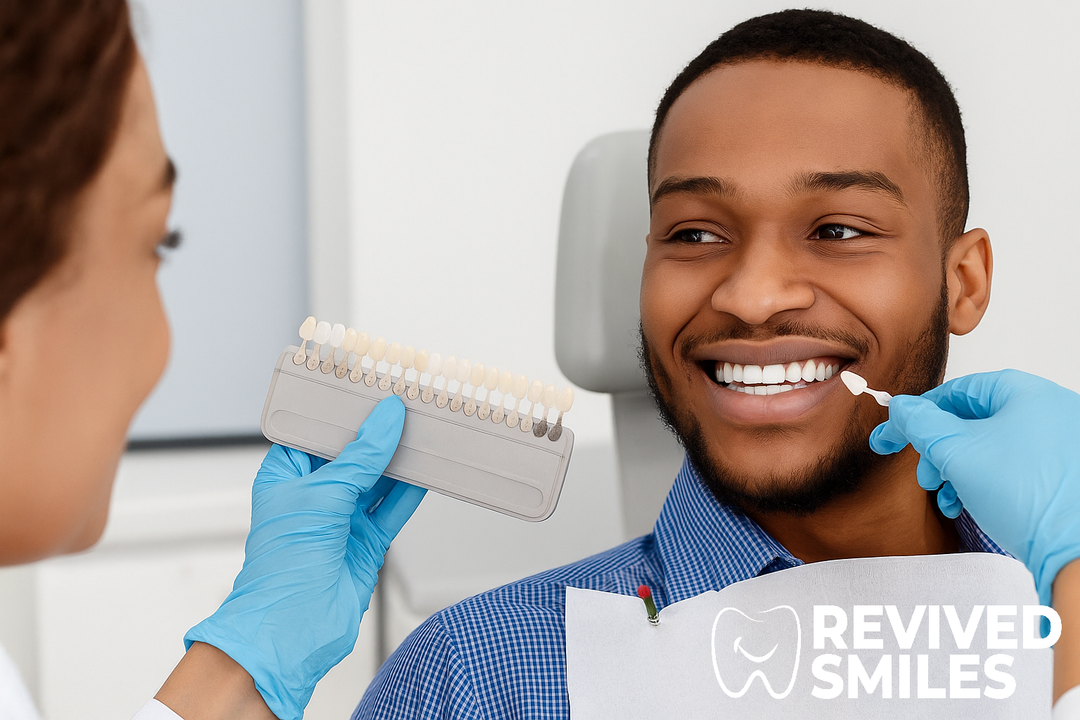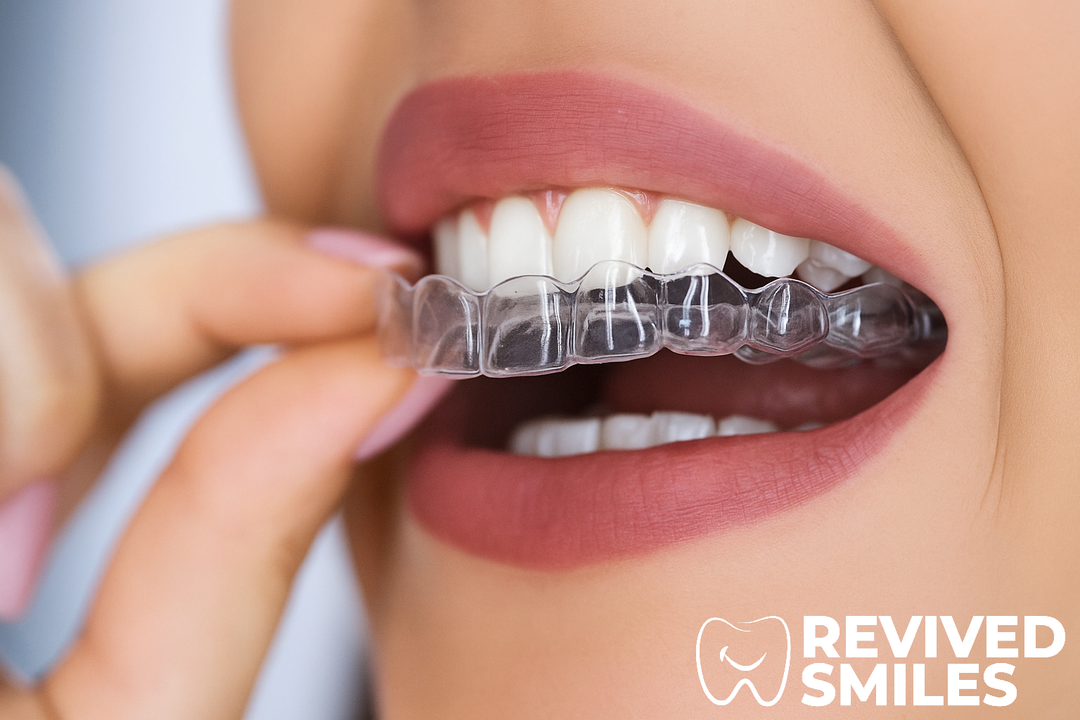What Is a Dental Retainer?

Finishing braces is a milestone, but your orthodontic journey doesn’t stop there. The next crucial step is wearing a dental retainer, an unsung hero that ensures your teeth stay exactly where they’re supposed to. Retainers are custom made devices designed to maintain teeth alignment after orthodontic treatment and prevent relapse. Whether you’ve worn clear aligners or traditional braces, retainers play a pivotal role in preserving your straight teeth for the long haul.
Let’s explore how retainers work, the different types of retainers available, and why wearing retainers consistently can make or break your results.
What Is a Dental Retainer?
A dental retainer is a custom-made appliance that holds your teeth in their new positions following orthodontic treatment. After wearing braces or aligners, your teeth need time to stabilize in their fresh alignment. Without a retainer, they can gradually shift back to their original position, undoing all that progress.
Teeth retainers come in a few styles, each designed to keep your teeth straight and protect your investment. Whether you’re focused on keeping your upper teeth, lower teeth, or both aligned, there’s a retainer tailored for your needs.
In short: retainers help you maintain that beautiful, straight smile you worked so hard to achieve.
Types of Dental Retainers
When it comes to types of retainers, your orthodontist may suggest a removable or fixed option depending on your unique case. Choosing the right type of retainer is important, as each has specific features, advantages, and disadvantages that can affect comfort, aesthetics, and effectiveness. Here’s a breakdown of the most common choices:
Removable Retainers
These are a go-to for many patients due to their ease of use and convenience. Popular styles include:
-
Essix Retainer: Made of clear plastic, this virtually invisible retainer fits snugly over the upper and lower teeth. It’s often called a vacuum formed retainer due to how it’s molded using thermoforming techniques. Explore the Essix Retainer
-
Hawley Retainers: The Hawley retainer is a classic removable orthodontic device known for its durability and adjustability. These classic wire retainers feature a metal wire across the front teeth anchored to an acrylic base. The metal wires in Hawley retainers help retain tooth position and allow for adjustments. In traditional retainer designs, wires play a key role in providing retention, but they can also impact aesthetics and speech.
These removable retainers can be taken out during meals and brushing, making them great for oral hygiene. Just be sure to wear your retainer as prescribed.
Permanent Retainers
Also known as fixed retainers or called permanent retainers, a fixed retainer is a permanent orthodontic device cemented behind the teeth, typically using a solid or braided wire bonded to the back of your teeth, often your lower teeth.
A permanent retainer is a custom-fitted device bonded to the inside surfaces of the teeth, playing a crucial role in maintaining alignment after orthodontic treatment.
They’re designed for continuous wear and are especially helpful for preventing the teeth shift that can happen if you forget to put in a removable retainer.
While they make retainer care slightly trickier, tools like a floss threader can help you clean around them effectively. In some cases, other retainers may be recommended, which differ in design and application to suit specific orthodontic needs.
How Dental Retainers Work
The concept is simple: retainers apply gentle pressure to keep your teeth in their new position after braces. Your jawbone and gum tissues need time to adapt, and retainers help them “memorize” where the teeth should stay. Retainers are essential to maintain straightened teeth and prevent them from moving back after orthodontic treatment.
Without proper orthodontic retention, your teeth can gradually shift, even years after treatment. If retainers are not worn consistently, teeth can revert to their original positions, undoing the results of your orthodontic work.
That’s why experts, including those from Orthodontics Australia, recommend wearing a retainer consistently, often at night indefinitely.
In some cases, retainers straighten minor shifting without the need for additional orthodontic treatment. But more often, they’re your best bet to keep your teeth in place.
Benefits of Using a Retainer
Let’s break down the top reasons to stick to your retainer routine:
-
Keeps teeth in their new position: Essential for lasting results after braces or aligners.
-
Prevents relapse: Stops your teeth from sliding back to their original position.
-
Protects against grinding: Some retainers function like nightguards.
-
Supports long-term oral health: Helps maintain proper bite, which reduces the risk of gum disease.
Wearing a retainer isn’t just about aesthetics,it protects your oral health and prevents the need for costly do-overs.
Retainer Care and Maintenance Tips
Proper retainer care is key to hygiene and durability. Here’s how to keep your retainer clean and effective:
-
Rinse your retainer with lukewarm water after each use. Make sure to remove food particles from the retainer to prevent plaque buildup and maintain oral hygiene.
-
Brush gently with a soft toothbrush and non-abrasive toothpaste.
-
Soak your retainer in a cleaning solution as recommended for a deeper clean. A deeper clean may be necessary if you notice visible buildup or persistent odor.
-
Store your retainer in its case when not in use.
If your retainer needs a fix, such as adjustments or repairs to improve fit or function, consult your orthodontist.
Daily Maintenance
-
Rinse after use: This removes food particles and bacteria.
-
Gently scrub with a soft bristled toothbrush or soft toothbrush, and mild soap. Avoid toothpaste as it can be abrasive.
-
For deeper cleans, soak in a retainer-safe solution or use a mix of baking soda and water.
Storage Matters
-
Always use a retainer case when it’s not in your mouth.
-
Never expose your retainer to heat (like a hot car),it can warp clear retainers made of hard plastic.
Extra Tips
-
Bring your retainer to dental check-ups.
-
Avoid using alcohol-based cleaners,they can degrade plastic.
-
Replace your retainer case every few months to avoid bacterial growth.
Taking the time for gentle brushing and regular cleaning not only protects your retainer but also supports your oral hygiene.
Duration & Wear Schedule

The golden rule? Wear your retainer as directed.
Immediately after orthodontic treatment, most people are instructed to wear their removable retainers for 20–22 hours a day. After an adjustment period, this typically shifts to nighttime wear.
But here’s the kicker: many orthodontists now recommend you wear a retainer at night indefinitely. Skipping nights can result in teeth shift, especially with lower teeth that are prone to movement.
Cost and Insurance Coverage
Wondering about retainer cost? It varies depending on type and provider:
-
Essix Retainer: $100–$300 per arch.
-
Hawley Retainers: $150–$600.
-
Fixed Retainers: $250–$600 including bonding.
Your insurance provider may cover part of the cost under orthodontic treatment benefits. Some plans even cover replacement retainers if yours is lost or damaged. Always check with your provider to avoid surprises.
If your current retainer is lost or damaged, it's important to get a new retainer as soon as possible to prevent your teeth from shifting.
You can also shop for high-quality retainers in our Retainers Collection.
When to Consult Your Orthodontist
Reach out to your orthodontist if:
-
Your retainer starts to feel loose or too tight.
-
There’s visible damage or wear.
-
You notice changes in your teeth alignment.
Small issues can lead to big problems if ignored. Don’t wait for your teeth to shift before seeking help.
FAQs About Dental Retainers
What’s the difference between removable and permanent retainers?
Removable retainers can be taken out for meals and cleaning, while fixed retainers stay bonded behind your teeth full-time. Both are effective, but suit different lifestyles.
How many hours a day should I wear my retainer?
Most people wear theirs for 20–22 hours at first, then transition to nighttime wear. Some need to wear it indefinitely at night to keep results.
How do I clean my retainer?
Use a soft toothbrush, mild soap, and soak regularly. Never use hot water or toothpaste.
How often should I replace my dental retainer?
Clear retainers last 1–3 years; Hawley retainers can last up to 10. Fixed retainers may last decades if maintained.
Can I eat or drink with my retainer in?
Only drink water. Remove it for meals to prevent damage and buildup.
Does insurance cover dental retainers?
Many plans do,especially if it’s part of your orthodontic treatment. Check with your insurance provider.
Will wearing a retainer hurt?
Some tightness is normal, but persistent pain isn’t. Call your orthodontist if discomfort continues.
Keep Your Smile for Life
Wearing a dental retainer may not feel glamorous,but it’s essential. It’s what keeps your teeth in their new alignment, supports your oral hygiene, and protects your investment.
Whether you prefer a clear retainer, a classic wire model, or a discreet braided wire bonded behind your lower teeth, the secret to success is simple: wear your retainer consistently and take proper care of it.
Need more guidance? Visit our Retainers 101: Comprehensive Guide for expert advice and real-world tips to make retainers part of your daily routine.
With good habits and the right support, you can enjoy a beautifully aligned smile for life.





Leave a comment